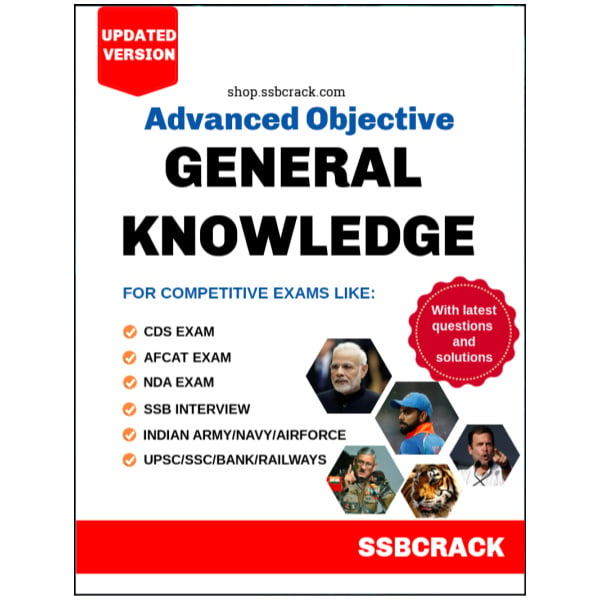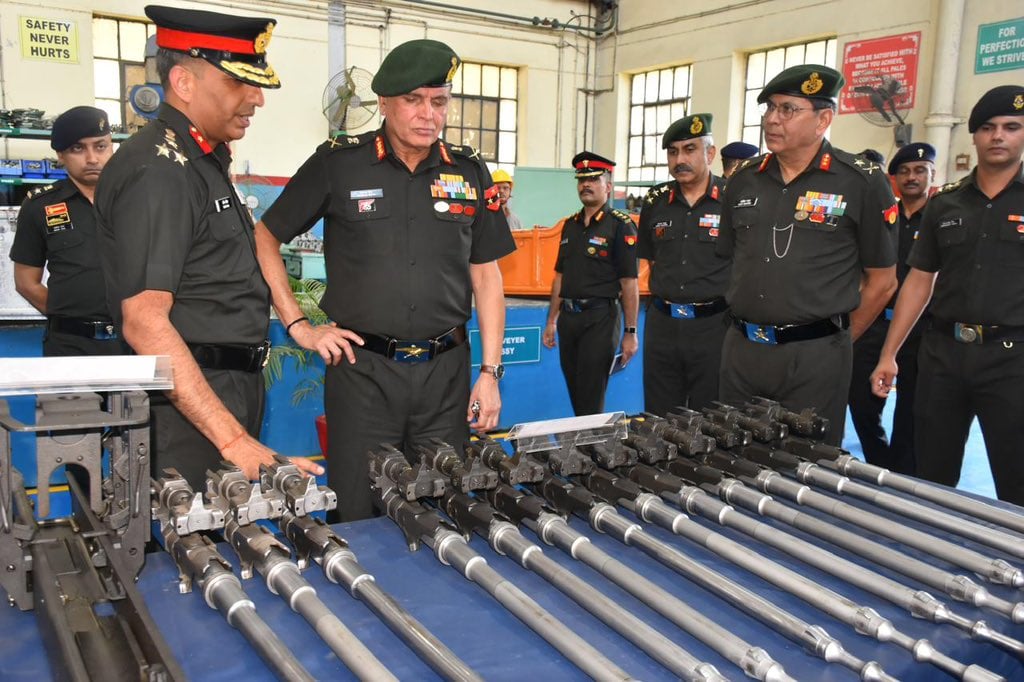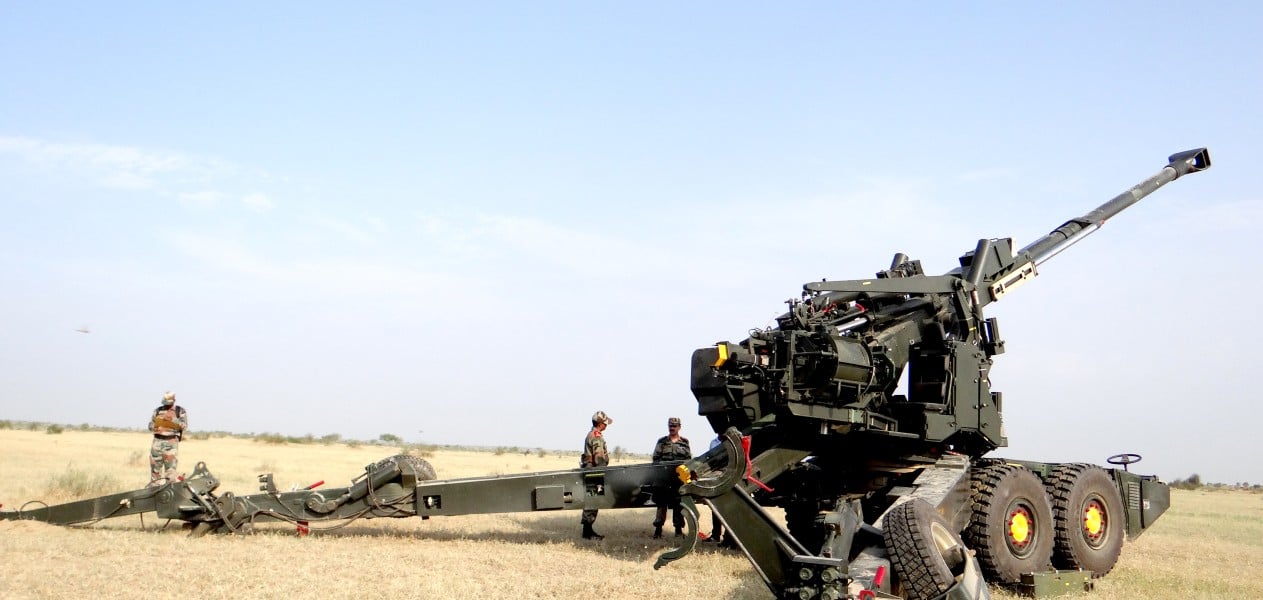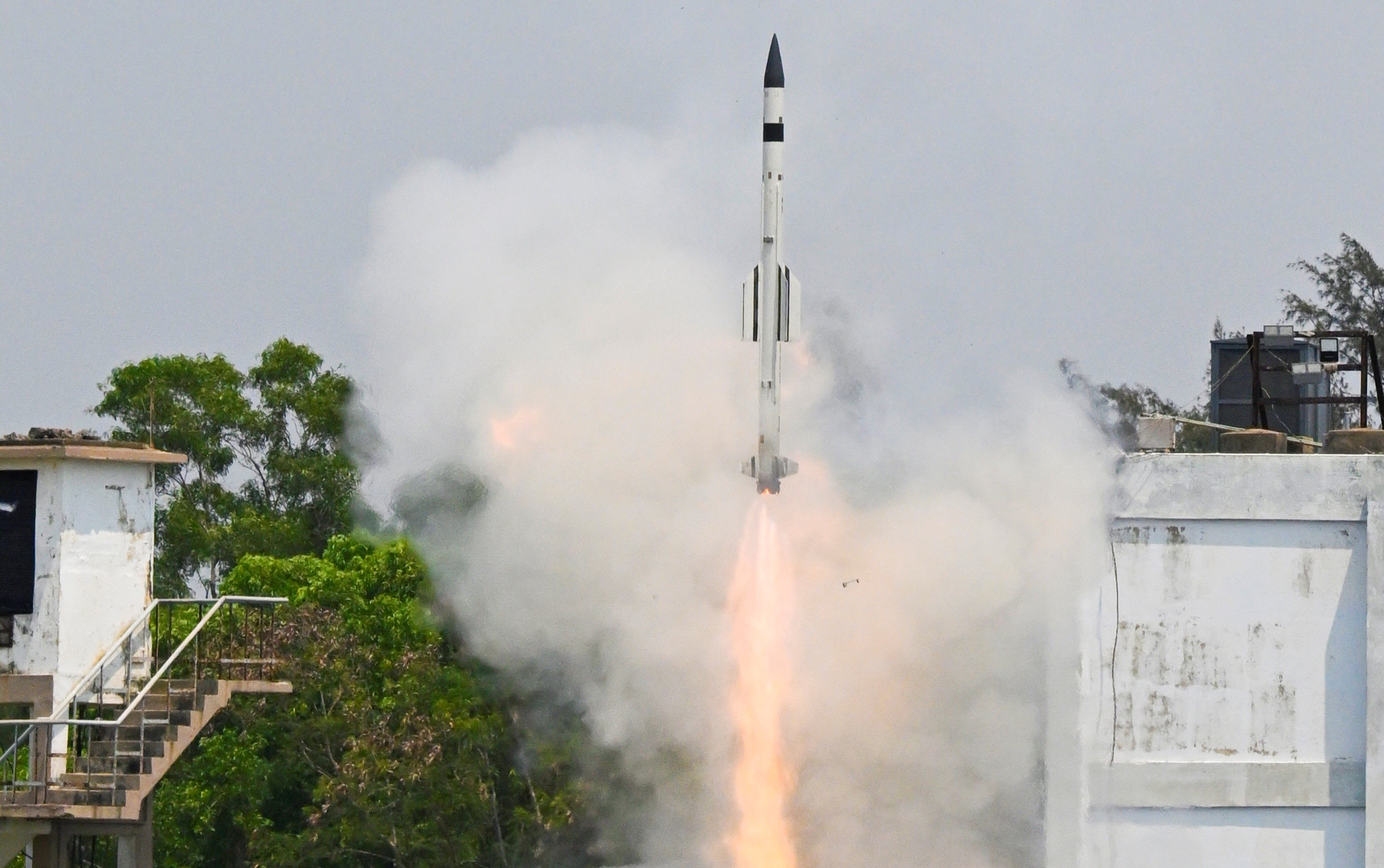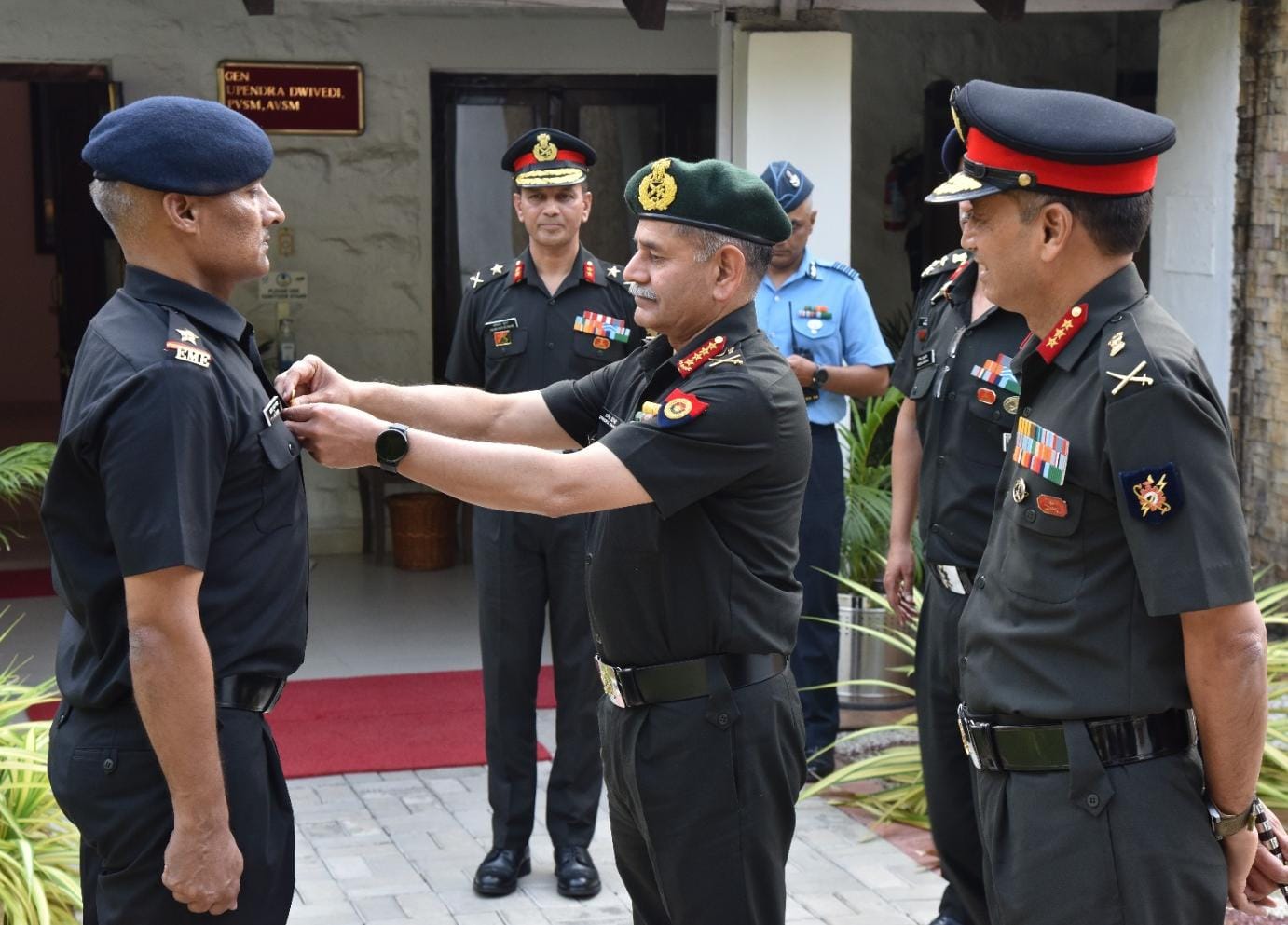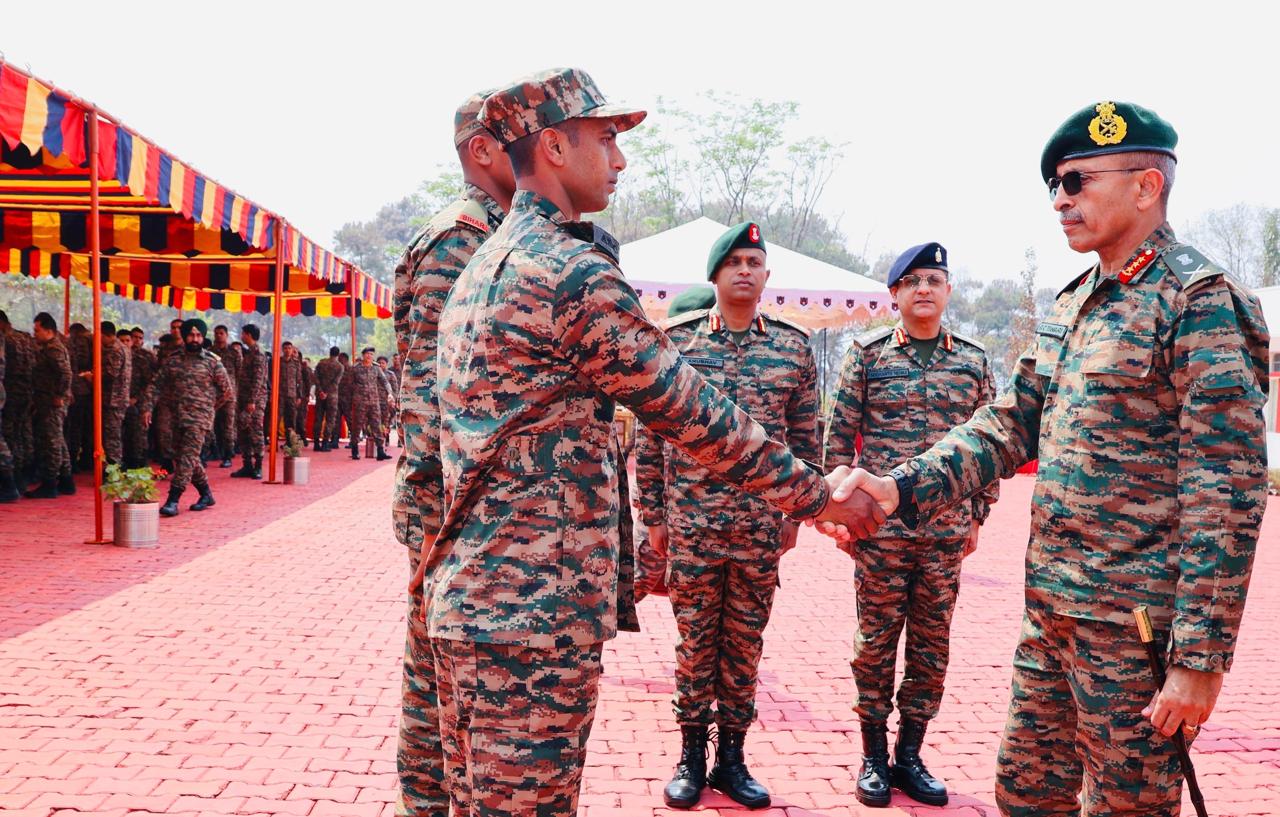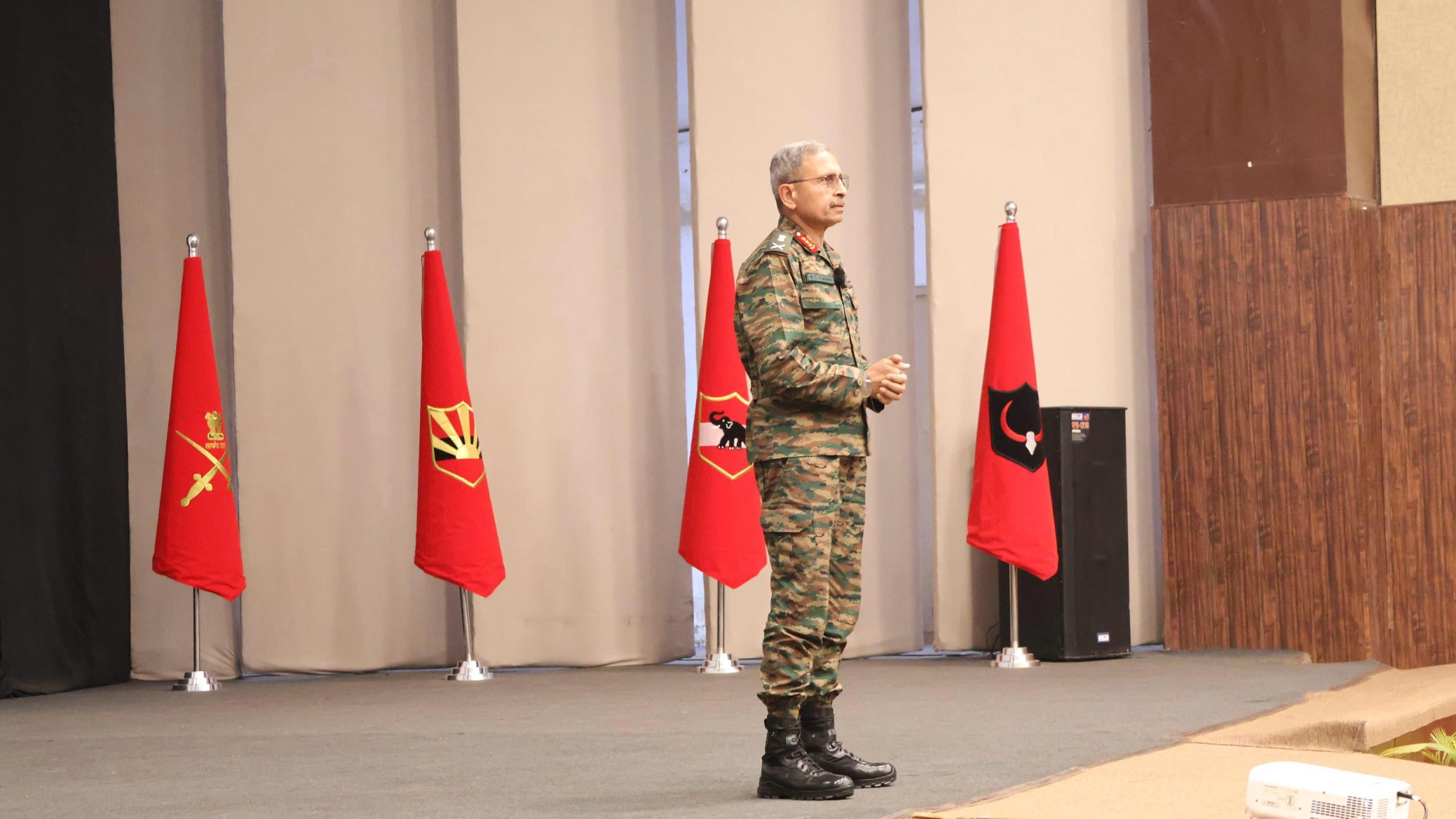‘Make in India’ programme is being used by the Government for defence procurements by categorising the capital acquisition proposals under ‘Buy (Indian-IDDM)’, ‘Buy (Indian)’, ‘Buy and Make (Indian)’, ‘Make’ and ‘Strategic Partnership Model’ categories of Defence Procurement Procedure (DPP)-2016. DPP -2016 focuses on institutionalising, streamlining and simplifying defence procurement procedure to give a boost to ‘Make in India’ initiative of the Government of India. In the last four financial years i.e. from 2015-16 to 2018-19, out of the total 210 contracts, 135 contracts have been signed with Indian Vendors including Defence Public Sector Undertakings/ Public Sector Undertakings/ Ordnance Factory Board and private vendors for capital procurement of defence equipment for Armed Forces such as Helicopters, Naval vessels, Radars, Ballistic Helmets, Artillery Guns, Simulators, Missiles, Bullet Proof Jackets, Electronic Fuzes, and Ammunition.
Government has issued 439 licenses covering 264 companies till March 2019. Industrial Licenses are issued for manufacturing of tanks and other armoured fighting vehicles, defence aircraft, space craft and parts thereof, warship, arms and ammunition and allied items of defence equipment, parts and accessories thereof. In addition, for a large number of defence components, no license is required. There are more than 8000 MSMEs which are among the vendor base of OFB &Defence PSUs supplying various items to them.
The percentage of expenditure on purchase of defence equipment (both Capital & Revenue) by the three Services from Indian companies was 54% of total expenditure in the financial year 2018-19.
In pursuance of ‘Make in India’ initiative of the Government, following measures have been taken to achieve substantive self-reliance in defence production: –
- Defence Procurement Procedure (DPP) has been revised in 2016 wherein specific provisions have been introduced for stimulating growth of the domestic defence industry.
- A new category of procurement ‘Buy {Indian-IDDM (Indigenously Designed, Developed and Manufactured)}’ has been introduced in DPP-2016 to promote indigenous design and development of defence equipment. It has been accorded top most priority for procurement of capital equipment. Besides this, preference has been accorded to ‘Buy (Indian)’,‘Buy and Make (Indian)’ & ‘Make’ categories of capital acquisition over ‘Buy (Global)’ & ‘Buy &Make (Global)’ categories.
- Government has notified the ‘Strategic Partnership (SP)’ Model which envisages establishment of long-term strategic partnerships with Indian entities through a transparent and competitive process, wherein they would tie up with global Original Equipment Manufacturers (OEMs) to seek technology transfers to set up domestic manufacturing infrastructure and supply chains.
- The ‘Make’ Procedure has been simplified with provisions for funding of 90% of development cost by the Government to Indian industry and reserving projects not exceeding development cost of Rs.10 Crore (Government funded) and Rs.3 Crore (Industry funded) for MSMEs.
- Separate procedure for ‘Make-II’ sub-category has been notified wherein a number of industry friendly provisions such as relaxation of eligibility criterion, minimal documentation, provision for considering proposals suggested by industry/individual etc., have been introduced. Till date, 36 proposals for development by industry have been given ‘In-principle’ approval under Make-II.
- Government has decided to establish two defence industrial corridors to serve as an engine of economic development and growth of defence industrial base in the country. These are spanning across Chennai, Hosur, Coimbatore, Salem and Tiruchirappalli in Tamil Nadu and spanning across Aligarh, Agra, Jhansi, Kanpur and Lucknow in Uttar Pradesh (UP).
- An innovation ecosystem for Defence titled Innovations for Defence Excellence (iDEX) has been launched in April 2018. iDEX is aimed at creation of an ecosystem to foster innovation and technology development in Defence and Aerospace by engaging Industries including MSMEs, Start-ups, Individual Innovators, R&D institutes and Academia and provide them grants/funding and other support to carry out R&D which has potential for future adoption for Indian defence and aerospace needs.
- The Ministry has instituted a new framework titled ‘Mission Raksha Gyan Shakti’ which aims to provide boost to the IPR culture in indigenous defence industry.
- Government has notified a Policy for indigenisation of components and spares used in Defence Platforms in March 2019 with the objective to create an industry ecosystem which is able to indigenize the imported components (including alloys & special materials) and sub-assemblies for defence equipment and platform manufactured in India.
- Defence Investor Cell has been created in the Ministry to provide all necessary information including addressing queries related to investment opportunities, procedures and regulatory requirements for investment in the sector.
- FDI Policy has been revised and under the revised policy, FDI is allowed under automatic route upto 49% and beyond 49% through Government route wherever it is likely to result in access to modern technology or for other reasons to be recorded.
- The Defence Products List for the purpose of issuing Industrial Licenses (ILs) under IDR Act has been revised and most of the components, parts, sub-systems, testing equipment and production equipment have been removed from the list, so as to reduce the entry barriers for the industry, particularly small & medium segment. The initial validity of the Industrial Licence granted under the IDR Act has been increased from 03 years to 15 years with a provision to further extend it by 03 years on a case-to-case basis.
- The process for export clearance has been streamlined and made transparent & online.
- Offset guidelines have been made flexible by allowing change of Indian Offset Partners (IOPs) and offset components, even in signed contracts. Foreign Original Equipment Manufacturers (OEMs) are now not required to indicate the details of IOPs and products at the time of signing of contracts. ‘Services’ as an avenue of offset have been re-instated.
- Government has set up the Technology Development Fund (TDF) to encourage participation of public/private industries especially MSMEs, through provision of grants, so as to create an eco–system for enhancing cutting edge technology capability for defence applications.





